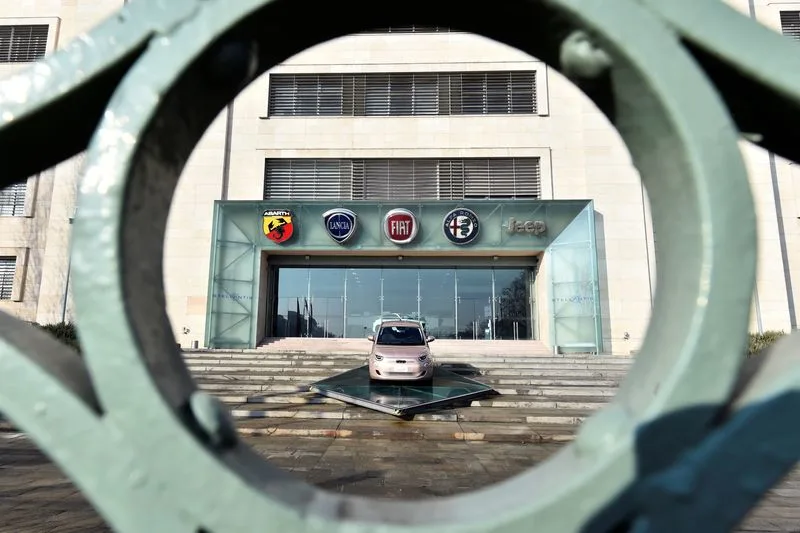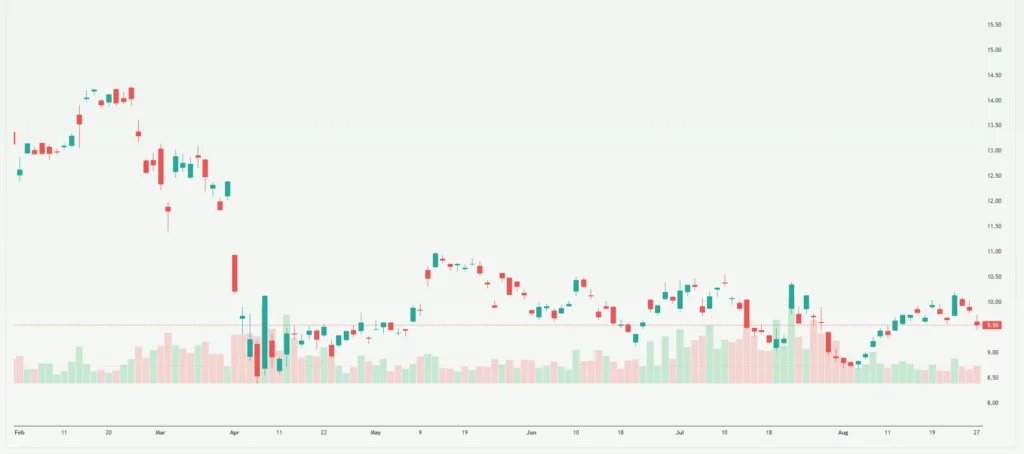Stellantis to Prolong Reduced Work Hours at Historic Turin Facility
Stellantis faces mounting operational challenges as the automotive giant extends workforce reductions at its historic Turin facilities. The company’s decision reflects broader market pressures affecting European automakers in 2025. These developments signal significant implications for both workers and stock market investors monitoring the automotive sector.
The Italian-French automaker continues navigating a complex landscape of declining sales and regulatory penalties. Recent financial data reveals troubling trends that extend beyond single facility operations.
Market analysts closely watch these developments as they may influence Stellantis’s stock performance and long-term strategic positioning.
Current Sales Performance Challenges
Stellantis recorded a 1.1% decline in European sales during July 2025, while the broader market experienced 7.4% growth. This divergence highlights the company’s struggle to maintain market share amid intensifying competition.
Brand performance varies significantly across the Stellantis portfolio. Lancia and Chrysler sales plummeted 68% during July, representing substantial losses in key market segments. However, Alfa Romeo provided some relief with 39% sales growth, demonstrating mixed brand performance within the corporate structure.
Seven-month figures reveal deeper concerns about Stellantis’s market position. The company sold 1.2 million vehicles through July 2025, representing an 8.1% decrease from 1.3 million units in 2024’s comparable period.
Financial Penalties Impact Operations
Regulatory compliance costs continue pressuring Stellantis’s financial performance and stock market valuation. The company paid $190.7 million in penalties during March and April 2025 for fuel economy violations dating to 2019 and 2020.
Total fines for model years 2016 through 2020 reached $773 million, creating substantial financial burden. These penalties directly impact profitability and available capital for research and development investments.
The proposed One Big Beautiful Bill Act may provide future relief by eliminating fines from model year 2022 forward. This legislative change could benefit Stellantis and other automakers facing similar regulatory challenges.
Workforce Reduction Strategies
Termoli Plant Adjustments
Stellantis agreed to implement reduced working hours for 1,800 workers at its Termoli facility starting September 1. This 12-month arrangement allows furloughs for up to 80% of contractual hours, reflecting serious operational challenges.
Weak market conditions and U.S. tariffs on engines shipped for Jeep Compass SUV production contribute to these workforce reductions. Approximately 500 workers face direct impact from these trade-related disruptions.
New hybrid dual-clutch transmission production at Termoli remains delayed until next year. This postponement further extends uncertainty for affected workers and local economic conditions.
Mirafiori Plant Extensions
The Mirafiori plant’s reduced working hours scheme extends for five additional months, running from September 1 through January 31. This extension demonstrates persistent challenges at one of Stellantis’s most historic facilities.
Fiat 500 hybrid production plans offer some hope, with operations expected to begin in November. However, this timeline remains subject to market conditions and supply chain stability.

Historical Context and Market Position
Italian car production reached its lowest level in almost 70 years during 2024, highlighting systemic challenges facing domestic automakers. Stellantis operations reflect broader industry struggles within the Italian manufacturing sector.
The stock market responds to these operational challenges with increased volatility in automotive sector investments. Investors monitor workforce announcements as indicators of future profitability and strategic direction.
Historic Turin facilities represent significant symbolic and operational importance for Stellantis. These plants carry decades of automotive heritage while adapting to modern market demands and electrification trends.
Industry Implications
European automotive markets face transformation pressure from electrification mandates and changing consumer preferences. Stellantis must balance immediate operational needs with long-term strategic positioning in evolving markets.
Trade tensions between the U.S. and Europe create additional complexity for multinational automakers. Tariff impacts on specific vehicle components demonstrate supply chain vulnerabilities requiring strategic adaptation.
Frequently Asked Questions
Weak market conditions, U.S. tariffs affecting engine exports, and declining European sales force operational adjustments to maintain financial stability.
Reduced operations may pressure short-term earnings while potentially positioning the company for improved efficiency and future profitability.
The company has paid $773 million in fuel economy fines for 2016-2020 model years, creating significant financial pressure alongside operational difficulties.
Disclaimer:
This is for informational purposes only and does not constitute financial advice. Always do your research.







